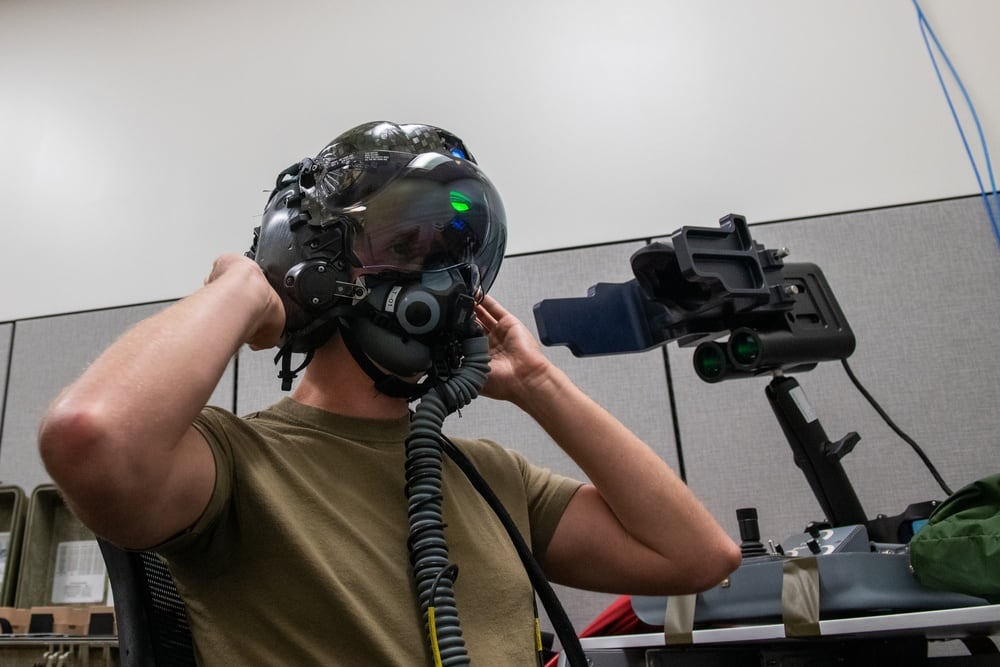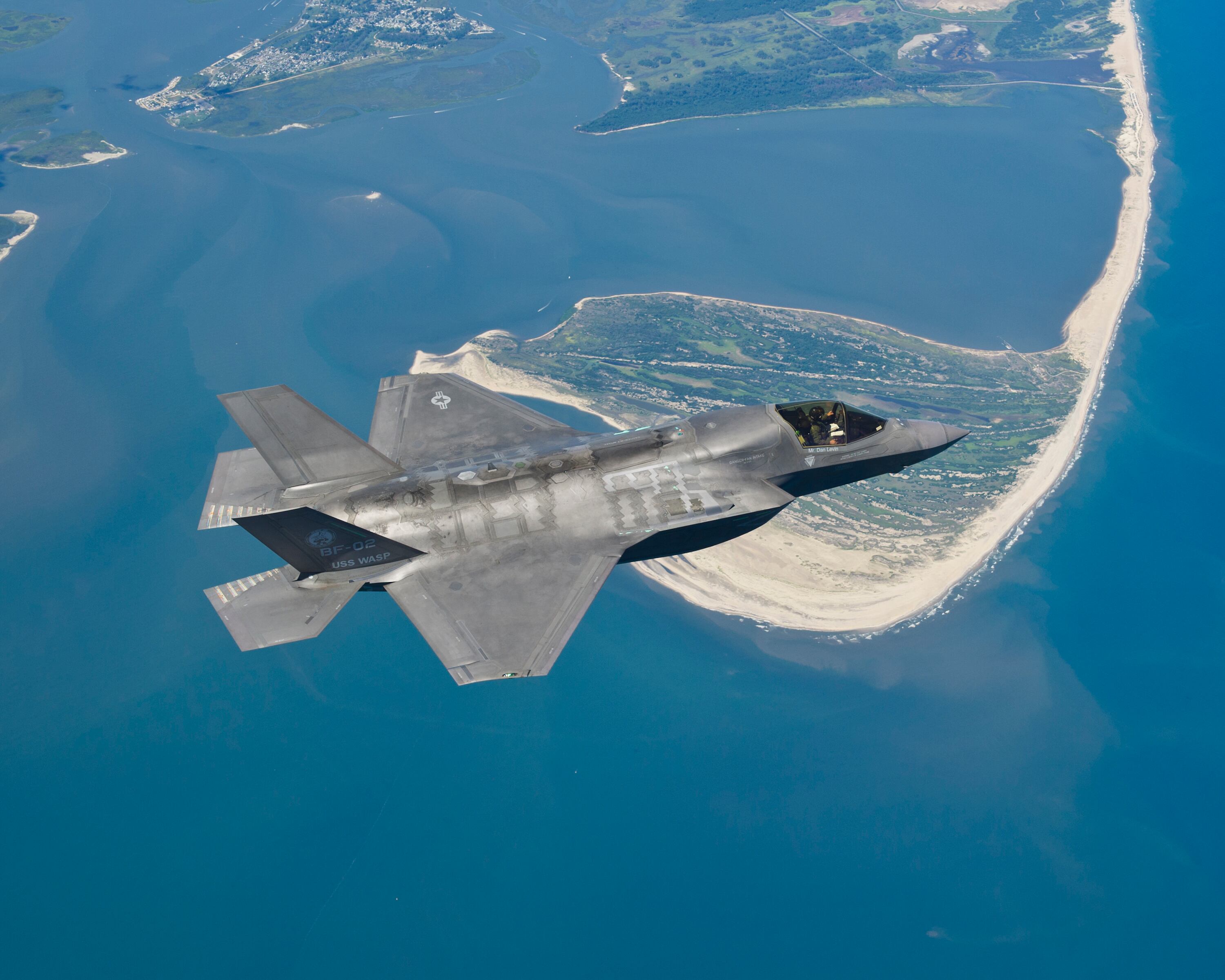The F-35A Lightning II could start flying near thunderstorms again soon, once the Air Force finishes upgrading its first jet for extra protection against lightning strikes.
If the upgrades go according to plan, one F-35A — the most widely used Joint Strike Fighter variant — by July would be allowed to resume unrestricted flight for the first time in almost two years, Joint Program Office spokesperson Laura Seal told Air Force Times.
The others will follow suit as they’re outfitted with new hardware, though Seal wouldn’t say how many need to be modified. The Air Force owned about 300 F-35As as of fiscal 2021.
In spring 2020, officials banned the F-35A from flying within 25 nautical miles of lightning or thunderstorms after finding that a crucial system may not function correctly if hit by a bolt.
At issue is the Onboard Inert Gas Generation System, or OBIGGS, which injects nitrogen-enriched air into the jet’s fuel tanks. That makes the flammable tanks nonreactive so they won’t explode when struck by lightning.
But a team making routine repairs to the advanced stealth fighter found worrisome damage to the tubes that pump nitrogen into the tanks. Lockheed claimed the problem was occurring after the jets were delivered to the Air Force.
Faulty inert gas tubes showed up in more than half of the 24 airframes that were inspected, Bloomberg reported at the time. That prompted an effort to revamp the OBIGGS system for the second time in 10 years.
“The root cause for the nitrogen tube failures is still under investigation. That said, the F-35 Joint Program Office and Lockheed Martin worked aggressively to develop and deploy an engineering fix that eliminates the problem, even as we continue to investigate the root cause of damage in the original OBIGGS configuration,” Seal said.
RELATED

The flight restriction will apply to a shrinking number of planes as the military works through the fixes. Still, the ban is expected to last through the end of 2025, or when all affected aircraft should be updated.
Lockheed has installed an improved version of OBIGGS onto all F-35As delivered since November, Seal said. For fighters that have been in use longer, crews will add on the new hardware at their local units.
“A 2022 software update will warn the pilot whenever the performance of OBIGGS is detected to be degraded,” Seal added.
The flight restriction hasn’t been foolproof, however.
Lightning struck an F-35A in midair Aug. 3, 2021, in a previously undisclosed incident, damaging the jet’s canopy and body panels, according to a list of the most severe Air Force accidents in fiscal 2021. Air Force Times obtained the list Jan. 14.
No one was hurt and the pilot returned to base without issue. The jet belonged to the Air Force Warfare Center’s 6th Weapons Squadron, a unit at Nellis Air Force Base in Nevada that offers postgraduate weapons and tactics training for the F-35A.
RELATED

The Air Force listed the strike as a Class B mishap — one that cost between $600,000 and $2.5 million to repair, permanently and partially disabled someone, or sent at least three people to inpatient hospitalization. Seal said the incident is still under investigation and the final repair cost could change.
It came about a week after lightning severely damaged two Marine Corps F-35Bs to the tune of $570,000. No Marines were injured. The Marines Corps initially estimated the repair cost at more than $2.5 million but later downgraded the mishap to the lower-cost Class C, Seal said.
F-35 units across the Air Force, Navy and Marine Corps have reported being hit by lightning 15 times as of Jan. 25, or one damaging strike per 30,000 flight hours, Seal said. Each incident has caused between $25,000 and $570,000 in repairs.
“It is unknown how often F-35s are hit by lightning, as the fleet is only required to report lightning strikes that result in reportable mishaps,” she said. “All reported strikes occurred while in flight, with none affecting the pilot’s ability to operate the aircraft safely.”
RELATED

No damaging strikes have been reported for Lightning II aircraft sitting on the ground, where they’re aided by equipment like zap-proof aircraft shelters.
“We have learned a great deal about how lightning propagates through composite aircraft that will be used for designing future aircraft,” Seal said. “The F-35 is more resilient against lightning strikes than originally anticipated, and we have learned that the advanced avionics continue to function without issue in all documented lightning strike events, validating the design standards used for this equipment.”
Just because pilots could eventually be cleared to approach bad weather doesn’t mean they should.
“Per U.S. Air Force flight regulations, pilots of all USAF aircraft — not just F-35s — are instructed not to intentionally fly into a thunderstorm,” Seal said.
Rachel Cohen is the editor of Air Force Times. She joined the publication as its senior reporter in March 2021. Her work has appeared in the Washington Post, the Frederick News-Post (Md.), Air and Space Forces Magazine, Inside Defense, Inside Health Policy and elsewhere.





